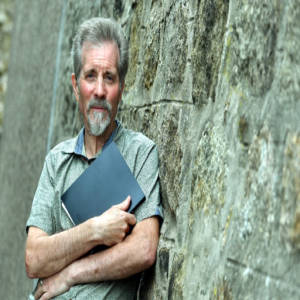Walls
7th day advent, is not just any wall, it is a wall of St Nicholas Kirk in Aberdeen. This wall runs along a very old street called Correction Wynd, and you can easily see the difference in between the in height Where the church sits and the the streets of the ancient city.
The Kirk of St Nicholas is a historic church located in the city centre of Aberdeen, Scotland. It is now officially known as the "Kirk of St Nicholas (uniting)" as it is membership of both of the Church of Scotland and the United Reformed Church. It is also known as "The Mither Kirk" (mother church) of the city.
The earliest mention of a church on the site of the present Kirk can be found in a Papal document of 1157. Given Aberdeen's proximity to the sea, St Nicholas was chosen as the patron saint of Aberdeen, as a miracle attributed to him was the rescue of some sailors in a storm.
The Kirk was enlarged in the 15th century. St Nicholas and St Mary's, Dundee, were probably the largest parish churches in medieval Scotland. This work was dedicated by Bishop Elphinstone in 1498. The 500th anniversary of the dedication of the enlarged church was marked with the installation of a special stained glass window at the main entrance to the Kirk, overlooking Drum's Aisle.
The church contains the Drum Aisle (the ancient burial-place of the Irvines of Drum Castle) and the Collison Aisle, which divide the two congregations and which formed the transepts of the 12th Century church of St Nicholas (architectural detail survives from this period). The West Church was built between 1751 and 1755, to plans gifted to the burgh by James Gibbs, in the Italian style, on the site of the medieval nave, the East in 1834 in Gothic-revival style on the site of the choir. In 1874 a fire destroyed the East Church and the old central tower with its lead-clad timber spire and its fine peal of nine bells, one of which, Laurence or "Lowrie", was 4 ft (1.2 m) in diameter at the mouth, 3.5 ft (1.1 m) high and very thick. The church was rebuilt and a massive granite tower erected over the intervening aisles, a new peal of 36 bells, cast in the Netherlands, being installed to commemorate the Victorian jubilee of 1887. These were replaced in 1950 with a carillon of 48 bells, the largest in the UK.
The building includes two sanctuaries under one roof (though only one is now used). Following considerable decay, the old nave collapsed in approximately 1742. A rebuilt church - known as the West Kirk - was built in 1755. This is still used for regular worship. The other section - the East Kirk - though it was still complete and retained a wooden medieval roof similar to that which survives at King's College Chapel, Old Aberdeen, was rebuilt in 1837 and had to be again rebuilt following a fire in 1874. Extensive renovation and archeological work is currently taking place in the East Kirk. The foundations of earlier phases of the kirk, many medieval burials, and large numbers of architectural fragments are among the rich finds from this important site.
Despite the many alterations to the fabric of the Kirk over the year's, St Nicholas retains a larger number of medieval effigies than any other Scottish parish church, though none of these are in their original positions. The Vault or Chapel of Our Lady of Pity survives under the east end of the Kirk. It has been refaced externally, but retains its medieval vaults within. A number of pieces of late medieval and 17th century woodwork are preserved in this vault.
- 0
- 0
- Canon EOS 300D DIGITAL
- 1/3
- f/16.0
- 34mm
- 800

Comments
Sign in or get an account to comment.


